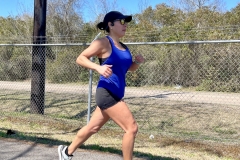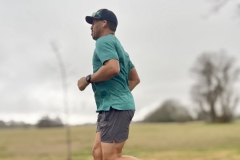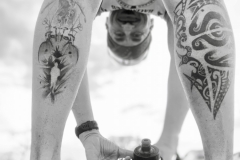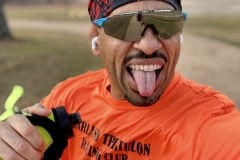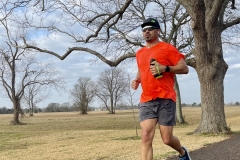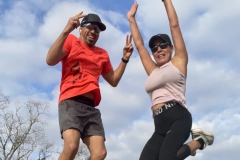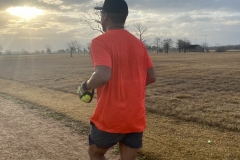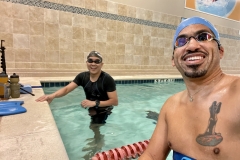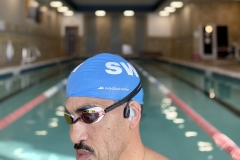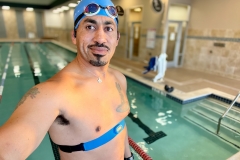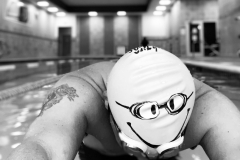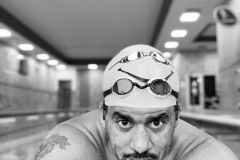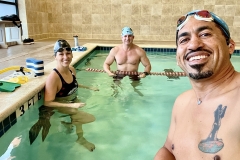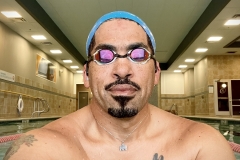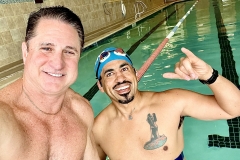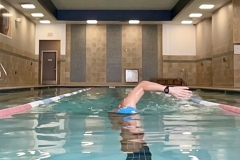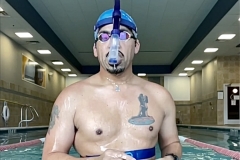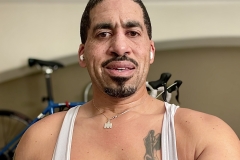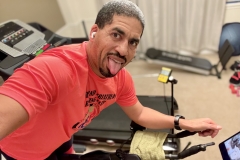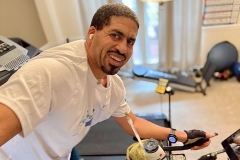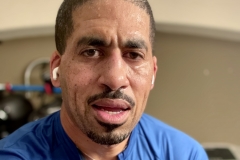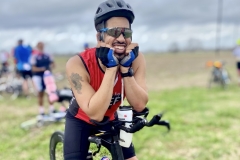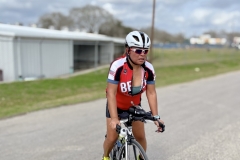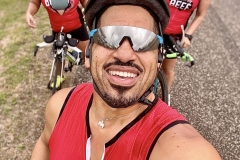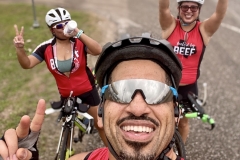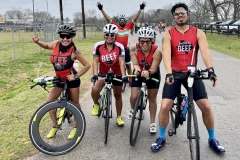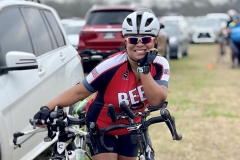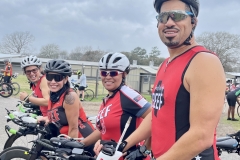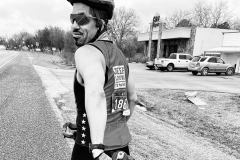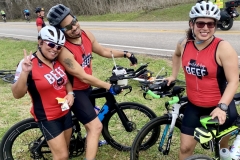Three months ago I successfully underwent prostate surgery. Since returning home from the hospital, recovery has been my priority. I’ve internalized the mantra “today is my day” and used it as fuel to maintain a steady progression towards recovery.
During the months of January and February, my training volume has steadily increased. I’m able to run and swim a lot. Cycling has, as expected, taken significantly longer to restart. Surprisingly, a good nutritional routine has been difficult to establish. So, 2 of the 4 disciplines are moving along smoothly, the other two are works in progress.
Running
The progression from walking to walk-run to running was fun and a joy to experience. Although, for the most part, I don’t like to run, I looked forward to being able to run without restraints. I simply do not like being constrained, having choices is my preferred modus operandi. Also, since running is such a high-impact activity, I used it as an indicator of my healing status. In the beginning, when I should have been walking but attempted to run, I could feel the strain on my pelvic area and knew that I was pushing too hard too fast. So, occasionally, I would increase my speed to a trot and assess how my insides reacted to the jostling.To promote healing and strength, I ran at least 3 days a week. Slowly and steadily increasing the time running vs walking, then increasing the distance and finally the pace. I haven’t executed any “long” runs yet, 10 miles has been my limit. In addition, none of the longer runs are at a high intensity, aka, race pace. I’m being relatively patient and keeping the bigger picture in mind.
Swimming
I had to wait until I was certain that all 6 of my surgical wounds were healed and sealed. So, the pool wasn’t even an option until mid-January. Prior to getting in the water, I began practicing gravity yoga with Lucas Rockwood of YogaBody. While doing yoga, I experienced incredible abdominal tightness and tenderness. The areas of surgical insertion were busy healing and forming scar tissue that was restricting the movement of my abdomen. Quandary 🤔… do I stretch more intensely and try to break up the scar tissue and risk affecting the closure and healing of my wounds? Or, do I wait and deal with a tighter, less pliable stomach?
I chose to push and stretch the scar tissue a little each day. I know that releasing “set” scar tissue is difficult and can be quite painful. So, I chose moderate pain with nascent scars instead of intense pain with mature scars. Initially, the tightness in my abdomen affected my movements in the water. Swimming freestyle requires elongation of the torso with each stroke. When I began to swim, I would experience discomfort and even some pain in my stomach that slowly subsided after a few laps. So, I would swim a while, rest, tighten back up and repeat the process over and over again. Eventually, I was able to swim with no discomfort. The scars are still there, of course, but they seem to have been loosened up well enough.
Overall, swimming was more difficult to restart than I anticipated, but I was happy to be in the water getting back into my groove. Also, I decided that one of my big, ludicrous goals this year is to complete the Ironman Swim in less than 59 min and 59 seconds. Completing 2.4 miles (~4200 yards) in that time will require that I average 1min25 seconds/100 yards…WHOA😲! So, the faster I’m able to start swimming again, the better my chances of achieving that goal in November.Cycling
Cycling was the last of the three physical disciplines that I resumed. I didn’t even sit on a bike seat until mid-January. Through late January, my perineal area was quite tender. I even carried a blow-up donut pillow through most of January to alleviate the discomfort of sitting on hard surfaces, so I knew that sitting on a firm, narrow bike seat would be a horrible idea. By late January, I could wait no longer. With serious trepidation, I chose to begin cycling indoors.
The first step was to simply sit on the bike for 60 minutes and do an easy spin. The only expectation that I should have had was to stay in the seat for 10-15 minutes and see how long and how bad the discomfort would be. Instead, I skipped the “entry-level” expectations and set my baseline to a 60-minute ride with moderate wattage. Remember, I was still working from the Ironman intensity perspective, where the first 45-minutes was the warmup period. A real ride lasted at least 3 hrs and pushing hard was a5-6 hr session. Somehow, I hadn’t recalibrated my perspective.
The first ride shall officially be known as my recalibration ride! I prepared my nutrition, put on my bike bib, gloves and set up the iPad as if I was really going to stay on the bike for a full hour. Instead, I sat on the bike, put it in the small (easy) gears, and set the trainer’s wattage (resistance) to very low. I sat on the seat and was immediately uncomfortable. Again, Ironman mind turned on and I told myself that the pain is bearable and temporary, you’ll only be here for 1 hr. You’ll settle in after a few minutes and it will feel fine. So, I pedaled for 5, then 10 minutes, shifting my body around trying to find a position that was not painful. I sat in the “aero” position, then sat up with my hands on the bar as well as on the elbow pads. Nothing helped, the pain and discomfort were getting worse. To add to the discomfort in the seat, my legs felt like deadwood. Even though I was pedaling on easy, my thighs were burning and feeling heavy as shit. After 20 minutes, I admitted that I was way too ambitious (as is my nature). Having regained my rational mind, I decided that I’d done enough for the day. I had “broken the ice”, learned about my current limits, and paid attention to how my body felt while trying to ride. I had lots to think about and consider going forward.
The resulting pain reminded me that I needed to find a new saddle, my current one caused too much chafing on the longer rides. I didn’t want to change it before Ironman Florida because I knew what to expect on a 6-7 hr ride. Now, I was done and starting from scratch again. Time to investigate replacement saddles. I chose to begin with the Bisaddle since it’s so adjustable. Fortunately, several of the local triathlon community were using them and had good experiences to share. Even more “luckier”, one of my triathlon club members had a 2nd one that he wasn’t using. I talked to him about the saddle and he offered to let me take it for a while and see if I liked it. If so, we’d work out a price for a used saddle…win-win.Clearly, riding inside on my trainer for at least a month was the best choice. As badly as I wanted to go outside, my bike is too stiff and I can feel every bump and dip in the road. I didn’t want to subject my perineum to the additional stress at this point in the recovery process. Fortunately, the subsequent sessions became progressively easier and less painful. My body was adapting quickly and the Bisaddle made a difference, it was more comfortable than my old saddle. My legs were heavy, but they were definitely beginning to feel like my legs again… and that feeling was all the fuel that I needed to push more instead of easing back into things. I was ready, I needed my body to catch up.
After a few more indoor rides and adjusting the new seat so that I wasn’t hurting anymore and my legs would feel fine after an hour on the trainer, so I decided to take the bike outside and ride in the country with some friends. Last year, as a new member of the Texas Beef Team, I registered for the Pedaling the Prairie fun ride (along with 1000 others). Of course, I’d selected the longest available distance, 71 miles. At the time, I was regularly riding longer than that distance, so, why not? Now, I was very anxious about jumping from 1 hour on the trainer indoors to 71 miles on open roads, but, hey, I’m registered and willing to see what I can do. I collected a few friends and we met at the fairgrounds prepared to have a fun day.
I choose to ride easily from the start. After about 20 miles, I realized that riding 71 was not remotely close to a good idea. So, I elected to cut the ride short and do the 45-mile route instead. I messaged my buddies that I was calling an audible and would see them at the finish line. A few decided to stay with me, the others continued on. I made the best choice, 45 miles was pushing it. I was happy to have made it, but I was happier to get off the bike.I wasn’t in any pain, nor was I exhausted, but I did sense that I was at my limit for the day. That ride let me know that I was ready to take my progression outside for longer rides.
Finally, the 4th discipline…
Nutrition
The sudden changes in my body and my inability to train have discombobulated my approach to proper nutrition. Specifically, fueling for performance AND healing. So, I’ll write about those struggles in a separate post.


